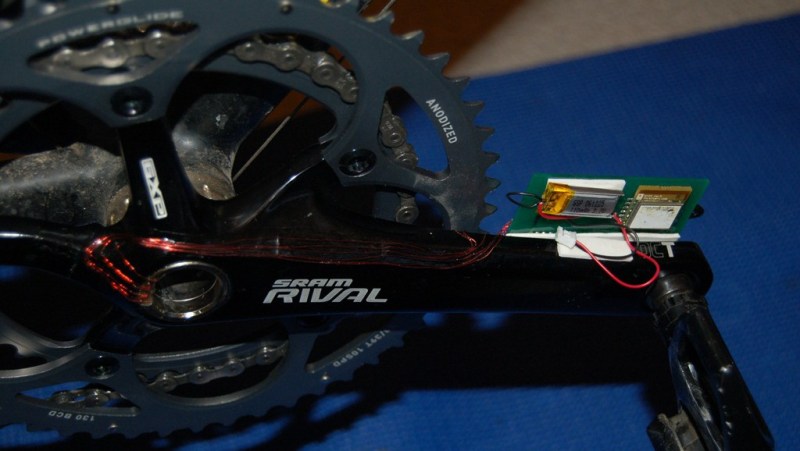Cycling power meters can set you back quite a pretty penny. [Keith] quotes prices starting at $1500 and going up to $4000. We know several serious cyclists who would think twice about spending that on a bike, and wouldn’t even consider putting that kind of investment into an accessory for it. But if you’ve got the time [Keith] will show you how to build and install your own cycling power meter.
The link above is a roundup of all the posts and videos [Keith] made along the way. We’ve embedded his introduction video after the break where he discusses the goals of the project. The system allows for independently measuring the power of each leg. This is accomplished using strain gauges on the cranks to monitor torque. This data is combined with cadence measurements (how fast the rider is turning the cranks) which is all that is necessary to calculate the power output of the rider.
The parts list comes in at about $350. This doesn’t include the equipment he used to test and calibrate his calculations.

















Did you guys link to the right video? This tells us nothing about the device except that commercial options are very similar to it.
Did you read the linked blog entry that tells you everything about the device?
I think the cost of commercial tools comes from their application: performance athletes.
I think his design is quite well done.
I wonder if it is possible to measure the torque by using the tension in the chain. They should be related. Hall sensors could be used to compute the rotating speed and the position of the main sprocket. this should allow for calculating the power for each leg.
To measure the tension in the chain i think the angle of the tensioner can be used (of course, depending on type and speed used)
Polar made a power meter that works this way
http://www.roadbikereview.com/cat/training/power-meters/polar/power-system/prd_366934_6207crx.aspx
Polar (maker of hear rate monitors) produces a chain-based power measurement system. Unfortunately it’s just as expensive as crank-based meters and doesn’t work as well since the measurement is dependent on chain position relative to a sensor – and the chain position varies as one shifts between rear cogs.
I wonder if a couple of the strain gauges you find in digital kitchen scales would work as well. They’d surely be easier to mount but you’d still need to track the angle of the crank to work out power.
@Cold_Turkey
Here is the inventor’s YouTube page, all the videos are there:
http://www.youtube.com/user/kwakeham
Me: “Power Meter, what do the sensors say about its power level.”
Power Meter: “It’s over 9000!”
Wow surely it shouldn’t cost that much? If you know your weight ( + bike weight) and have an accelerometer this should be easy right? With some fudge factors (bike losses and air resistance)
Just can’t work out a simple way to combine those things to achieve it. Unless we ignore gravity.
You still have to put power out even to keep going at the same speed. You have rolling resistance, rotating mass (wheels), air resistance is a big factor and gets a lot bigger at higher speeds. If it was as easy as adding an accelerometer and knowing a few stats then SRM would be out of business.
Look do a pedal based system (http://www.cyclepowermeters.com/look-polar-113-c.asp) but it’s not cheap either.
All of the commercial systems seem to be based on measuring strain at some point in the drivetrain.
The iBike commercial Power Meters work on that principle (“opposing force” – http://www.ibikesports.com/how_iBike_works.html). I doubt they’ll be as accurate as the ones measuring strain directly. It’s one thing for short measurements or maybe current power output, but over a 4-5 hour bike ride the totals are probably off quite a bit.
That has been tried before. The problem is that the fudge factors lead to seriously inaccurate results. On flat terrain at a moderate speed, air resistance can easily be the largest opposing force. However that depends greatly on wind speed, wind direction, and rider aerodynamics. The latter varies not just from rider to rider, but can easily be changed by one rider: sitting up straight vs getting in to a tuck.
I’ve long thought about doing just this. . . it would be nice to ditch my PowerTap which is very heavy. However, it is mostly a training device as power output during an mountain bike race or cyclocross race is so variable it is actually more reliable to go be heart rate. Road races, time trials and triathlons are a different story as efforts are sustained and more consistent. It is nice to have power data to look at after the race though.
Nice work.
– Robot
a power meter that costs $’000’s?!?! £100 in the UK
No.